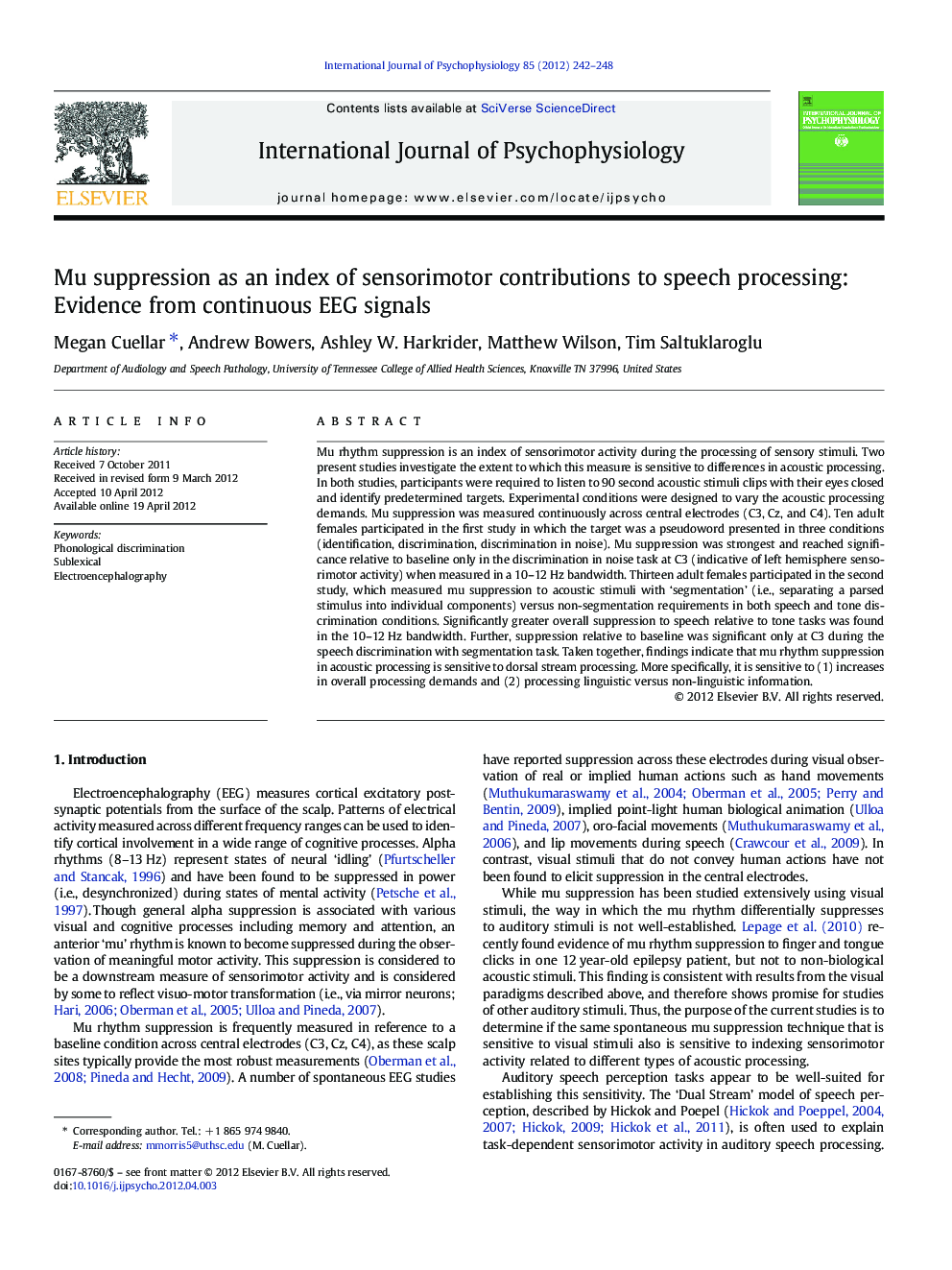| کد مقاله | کد نشریه | سال انتشار | مقاله انگلیسی | نسخه تمام متن |
|---|---|---|---|---|
| 931286 | 1474440 | 2012 | 7 صفحه PDF | دانلود رایگان |

Mu rhythm suppression is an index of sensorimotor activity during the processing of sensory stimuli. Two present studies investigate the extent to which this measure is sensitive to differences in acoustic processing. In both studies, participants were required to listen to 90 second acoustic stimuli clips with their eyes closed and identify predetermined targets. Experimental conditions were designed to vary the acoustic processing demands. Mu suppression was measured continuously across central electrodes (C3, Cz, and C4). Ten adult females participated in the first study in which the target was a pseudoword presented in three conditions (identification, discrimination, discrimination in noise). Mu suppression was strongest and reached significance relative to baseline only in the discrimination in noise task at C3 (indicative of left hemisphere sensorimotor activity) when measured in a 10–12 Hz bandwidth. Thirteen adult females participated in the second study, which measured mu suppression to acoustic stimuli with ‘segmentation’ (i.e., separating a parsed stimulus into individual components) versus non-segmentation requirements in both speech and tone discrimination conditions. Significantly greater overall suppression to speech relative to tone tasks was found in the 10–12 Hz bandwidth. Further, suppression relative to baseline was significant only at C3 during the speech discrimination with segmentation task. Taken together, findings indicate that mu rhythm suppression in acoustic processing is sensitive to dorsal stream processing. More specifically, it is sensitive to (1) increases in overall processing demands and (2) processing linguistic versus non-linguistic information.
► We examined the relationship between mu suppression and acoustic discrimination.
► We included speech and tone listening tasks that varied according to task demand.
► The degree of mu suppression increased as task demands increased.
► Mu suppression did not occur in response to non-speech tasks.
► Results were consistent with previous studies and validated this EEG technique.
Journal: International Journal of Psychophysiology - Volume 85, Issue 2, August 2012, Pages 242–248